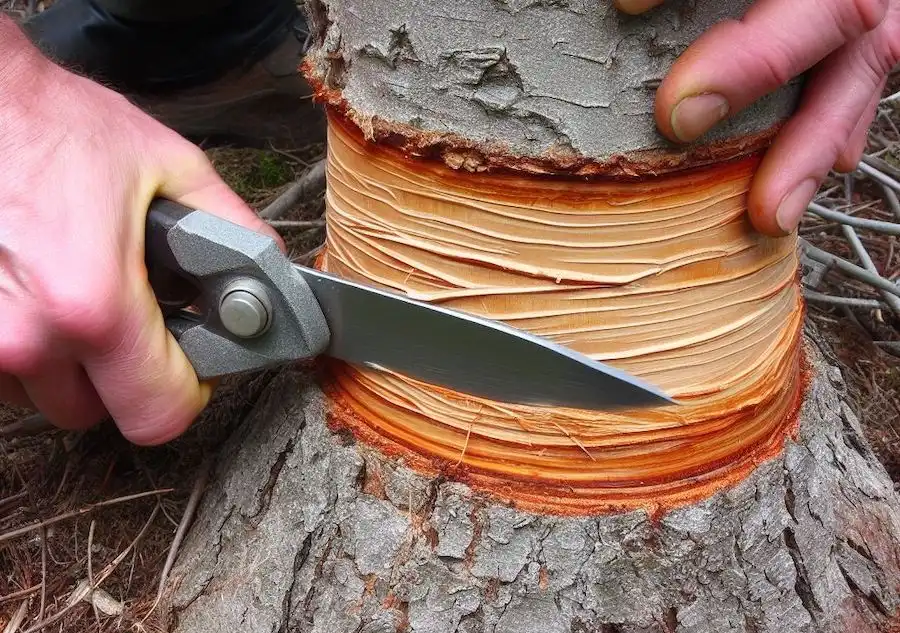How to Kill a Tree Without Cutting It Down: Exploring Various Methods
Killing a tree without cutting it down can be necessary for various reasons, such as when a tree becomes a hazard or grows too close to structures. While cutting down a tree is the most direct method, it can be labor-intensive, dangerous, and sometimes not feasible. There are subtler methods to achieve this, each with its advantages and considerations. Here, we will explore three such methods: girdling the tree, using chemicals, and using copper nails.
1. Girdling the Tree
What is Girdling?
Girdling is a common method to kill a tree without cutting it down. It involves cutting a notch or groove around the tree’s trunk, severing the bark and the cambium layer beneath it. This incision disrupts the flow of sap between the roots and the rest of the tree, essentially cutting off the tree’s nutrient and water supply.

How to Girdle a Tree
- Use an axe, hatchet, or chainsaw to create a groove around the tree’s circumference.
- The depth of the incision should be about 1-1.5 inches, varying with the size of the tree. A thicker tree requires a deeper cut.
- One notch is generally sufficient, but a second notch a few inches above the first can be added for larger trees.
2. Using Chemicals
Choice of Chemicals
Herbicides like glyphosate and imazapyr are effective for killing trees. They interfere with the synthesis of proteins in the tree, leading to its death. The choice of chemical depends on personal preference and the species of tree.
Methods of Application
- Hack and Squirt Method: Make incisions into the bark and spray herbicide into the cuts. The incisions do not need to encircle the tree completely.
- Foliar Herbicide Application: Spray a growth control herbicide onto the leaves. This method is more suitable for young saplings.
- Basal Bark Application: Use a soluble oil herbicide, like triclopyr ester, and spray the tree’s bark. This method works best on smaller trees or those with thin bark.
3. Using Copper Nails
Methodology
Copper nails can be used to kill a tree by disrupting the flow of nutrients and water. The theory is that copper ions released by the nails will poison the tree from the inside.

Considerations
- This method has been criticized for potential environmental harm, as copper ions can leach into the soil and groundwater, affecting the surrounding ecosystem.
- The effectiveness of copper nails in killing trees has been debated, and it may not be effective for larger trees or hardwood stumps.
Conclusion
Each method of killing a tree without cutting it down has its own set of advantages and drawbacks. Girdling is a straightforward mechanical method, while chemical methods offer more flexibility in application but come with environmental concerns. The use of copper nails, while a simpler approach, has questionable effectiveness and potential environmental risks. It is crucial to consider the specific circumstances and potential impacts before choosing a method to kill a tree.



















